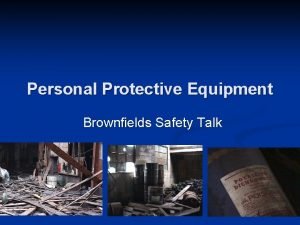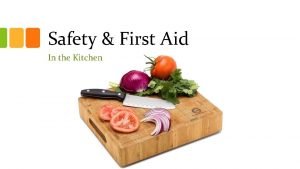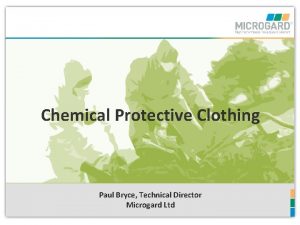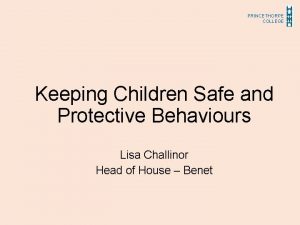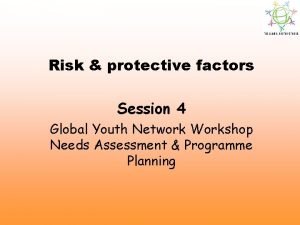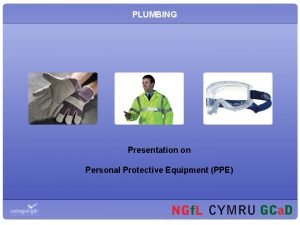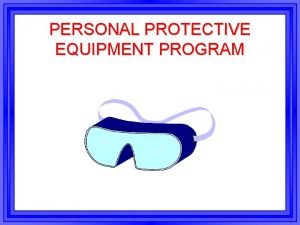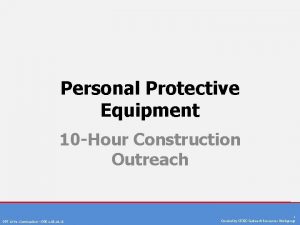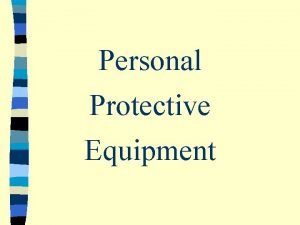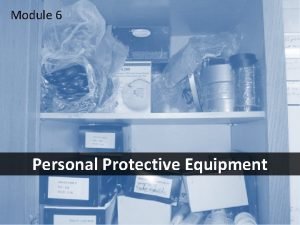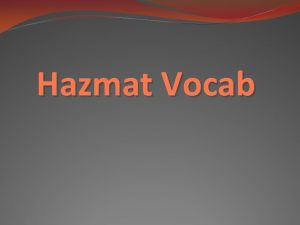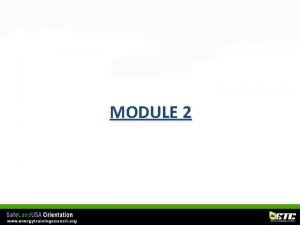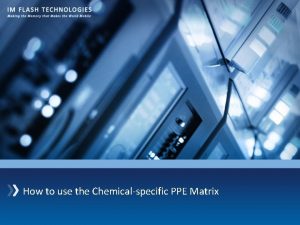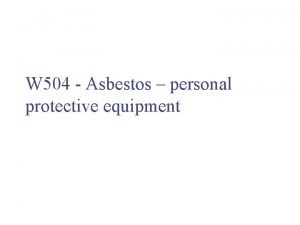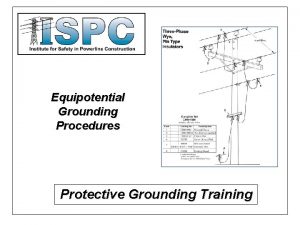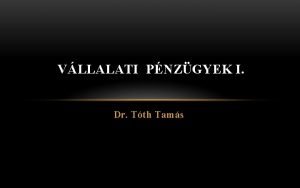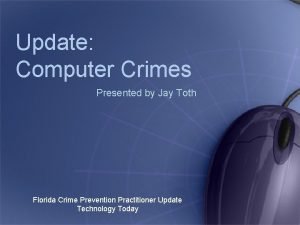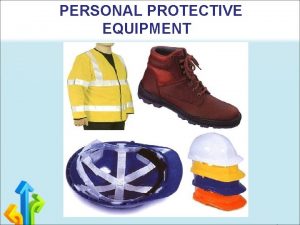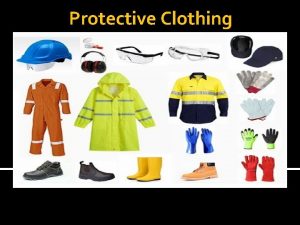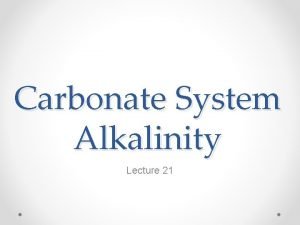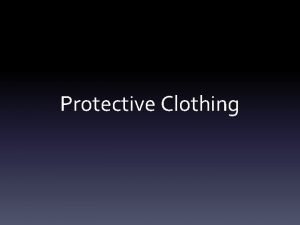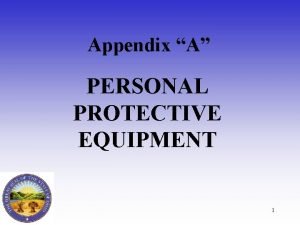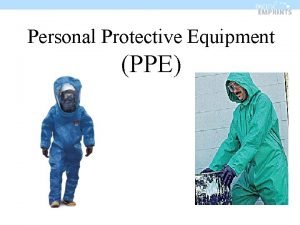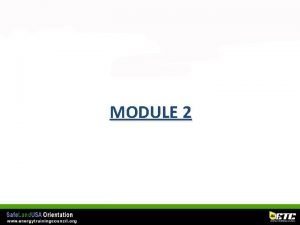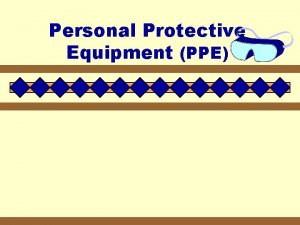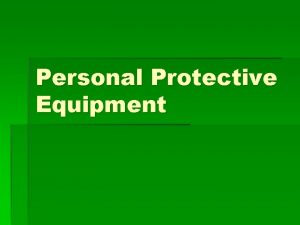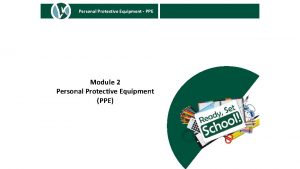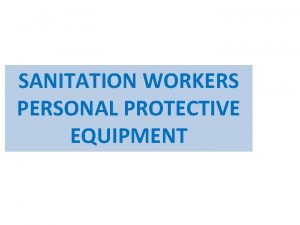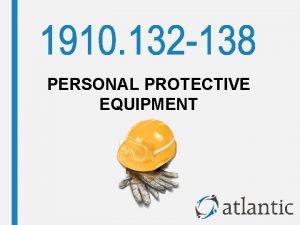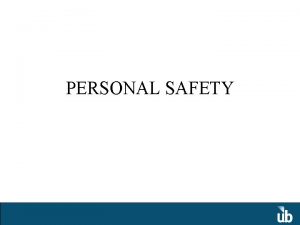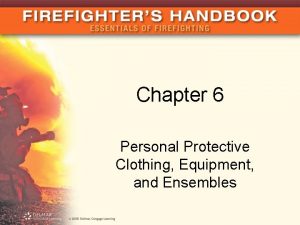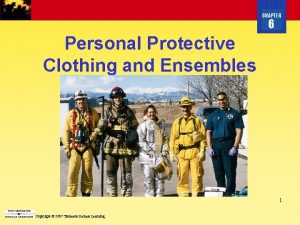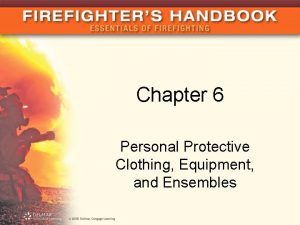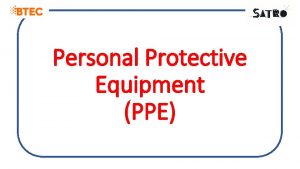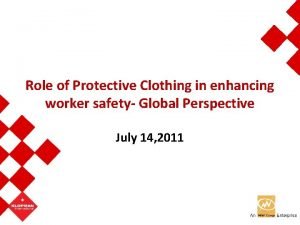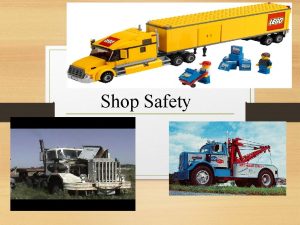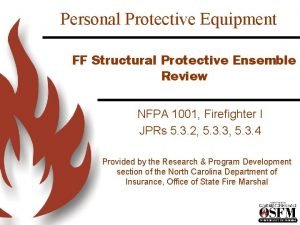Personal Safety and Protective Clothing Stephen J Toth

























- Slides: 25

Personal Safety and Protective Clothing Stephen J. Toth, Jr. Department of Entomology North Carolina State University Wayne G. Buhler Department of Horticultural Science North Carolina State University Photograph from North Carolina Pesticide Applicator Training Program.

Types of Toxicity to Pesticides • Acute: adverse effects following a brief exposure (i. e. , minutes or hours) to a pesticide; symptoms are usually obvious and reversible • Chronic: adverse effects following prolonged exposure (i. e. , weeks or years) to a pesticide; usually results from repeated doses of the pesticide • Allergic: immune system response to pesticides; permanent and worsens with recurrent exposures; allergy can extend to similar substances; can be fatal

Routes of Exposure to Pesticides Inhalation Dermal Oral nose lungs mouth stomach eyes skin Graphics from Greg Cope, Dept. of Toxicology, NC State University.

Means of Exposure to Pesticides • Inhalation (nose and lungs): breathing dusts and vapors of pesticides • Oral (mouth and stomach): eating, drinking or smoking with unwashed hands after handling pesticides; eating unwashed foods containing pesticide residues • Dermal (eyes and skin): pesticide spills and splashes, open cuts in skin, inadequate protective clothing when applying pesticides

Effects of Acute Toxicity to Pesticides • Inhalation (nose and lungs): pain or tightness in the chest • Oral (mouth and stomach): burning North Carolina Pesticide in mouth, sore throat, upset Applicator Training Program stomach • Dermal (eyes): irritation, temporary or permanent blindness • Dermal (skin): itching, blisters, rash

Symptoms of Acute Toxicity to Pesticides • • Blurred vision Diarrhea Dizziness Excessive sweating Fatigue Headache Vomiting Stomach cramps North Carolina Pesticide Applicator Training Program

Effects of Chronic Toxicity to Pesticides • • Tumors Genetic effects Miscarriages Impotence • • Birth defects Infertility Sterility Nervous system disorders These effects may result from a single pesticide exposure that does not become apparent until much later; or from repeated exposures to pesticides over a long period of time.

Allergic Reactions to Pesticides • Systemic: asthma, shock • Skin irritation: rashes, blisters, sores • Eyes and nose: itchy and watery eyes, sneezing

Emergency Response to Pesticide Poisonings • Administer first aid • Call physician or go to a hospital • Take pesticide label or container with you • Call a poison control center (Carolinas Poison Center at 1 -800 -848 -6946 or 1800 -84 -TOXIN) North Carolina Pesticide Applicator Training Program

First Aid for Pesticide Poisoning Dermal Exposure (Skin) • Drench skin with water • Remove contaminated clothes • Wash body with mild soap and water • Do not allow victim to North Carolina Pesticide Applicator Training Program chill or overheat • Apply loose, clean and dry covering to burns • Do not apply ointments unless prescribed by physician

First Aid for Pesticide Poisoning Dermal Exposure (Eyes) • Wash eyes quickly, but gently with water or commercial eye wash • Rinse eyes with cool, clean water for 15 or more minutes • Do not use chemicals or drugs in rinse water North Carolina Pesticide Applicator Training Program

First Aid for Pesticide Poisoning Oral Exposure • Rinse mouth with plenty of water • Drink water or milk (up to one quart) • Induce vomiting only if instructed to do so by the product label North Carolina Pesticide Applicator Training Program

First Aid for Pesticide Poisoning Inhalation Exposure • Get victim to fresh air immediately • Loosen tight clothing on victim that might constrict breathing • Apply artificial respiration if victim has stopped breathing North Carolina Pesticide Applicator Training Program

Personal Protective Equipment (PPE) Minimum Body Protection • • Long-sleeved shirt Long-legged pants Chemical resistant boots Chemical resistant gloves Wide brimmed hard hat Eye goggles (if needed) Chemical resistant apron (when mixing and loading) North Carolina Pesticide Applicator Training Program

Personal Protective Equipment (PPE) Types of Protective Clothing Chemical Resistant: Non Chemical Resistant: • • • Cotton • Leather • Canvas Rubber Neoprene Plastic Nonwoven fabric coated with plastic or other material

Personal Protective Equipment (PPE) Chemical Resistant Clothing • • • Body suits Hoods Gloves Footwear Hats Aprons North Carolina Pesticide Applicator Training Program

Personal Protective Equipment (PPE) Chemical Resistant Clothing • Need the maximum protection when mixing and loading pesticides, handling concentrated chemical North Carolina Pesticide Applicator Training Program

Personal Protective Equipment (PPE) Reusable Protective Clothing • Chemical resistant, can be cleaned and reused • Suits, hoods, gloves, boots: rubber or plastic; inspect thoroughly before each use • Fabric coveralls: do not clean and reuse if contaminated with concentrated pesticide • Eyewear, respirators, helmets: can be cleaned and reused North Carolina Pesticide Applicator Training Program

Personal Protective Equipment (PPE) Disposable Protective Clothing • Chemical resistant, but can not be cleaned of pesticide • Nonwoven fabric coated with plastic • Suits, hoods and footwear • Dust masks and some respirators North Carolina Pesticide Applicator Training Program

Personal Protective Equipment (PPE) Types of Respirators • Air-supplying respirators: supply user with clean, uncontaminated air from independent source; use if oxygen supply is low or fumigating enclosed areas • Air-purifying respirators: include dust masks, devices containing a body and cartridges with airpurifying materials, and devices containing a body and canister with air-purifying material (gas North Carolina Pesticide masks) Applicator Training Program

Personal Protective Equipment (PPE) Air-Purifying Respirators • Fit test: perform before first use of a respirator • Fit check: perform before each use of the respirator • Wash respirator after each use • Store clean and dry North Carolina Pesticide Applicator Training Program

Personal Protective Equipment (PPE) Handling Fumigants • Small amounts of fumigants can be fatal (they are extremely toxic gases) • Must wear the proper respirator for the fumigant you are applying • Should wear the respirator during all exposures (i. e. , applying chemical, removing tarp, etc. ) • Never work alone when applying fumigants • Indoors: use an air-supplied respirator

Personal Protective Equipment (PPE) Washing Protective Clothing • Wash the clothes in which you apply pesticides separately from other clothing North Carolina Pesticide Applicator Training Program

Personal Protective Equipment (PPE) Washing Protective Clothing • • • Wear gloves and work in well-ventilated area Rinse clothing (hand rinse or washing machine) Wash a few items at a time in washing machine Rinse clothes twice Use two entire wash cycles if necessary Run machine one cycle after removing clothes (to remove any pesticide residues from washer) • DO NOT wash badly-contaminated clothing

References • Applying Pesticides Correctly: A Guide for Private and Commercial Applicators. Unit 6: Harmful Effects and Emergency Response. pp. 61 -74. • Applying Pesticides Correctly: A Guide for Private and Commercial Applicators. Unit 7: Personal Protective Equipment. pp. 75 -94.
 Personal protective equipment safety talk
Personal protective equipment safety talk First aid in the kitchen
First aid in the kitchen Microgard protective clothing
Microgard protective clothing Process safety vs personal safety
Process safety vs personal safety Safety continuum protective behaviours
Safety continuum protective behaviours Personal protective factor
Personal protective factor Ppe in plumbing
Ppe in plumbing Personal protective equipment program
Personal protective equipment program Personal protective equipment ppt
Personal protective equipment ppt Personal protective equipment for smaw
Personal protective equipment for smaw Objectives of ppe
Objectives of ppe Personal protective equipment for farmers
Personal protective equipment for farmers A worker mixing chemicals must not wear
A worker mixing chemicals must not wear Personal protective equipment in chemistry laboratory
Personal protective equipment in chemistry laboratory Personal protective equipment vocabulary
Personal protective equipment vocabulary Summary of personal protective equipment
Summary of personal protective equipment Personal protective equipment pictograms
Personal protective equipment pictograms Ppe matrix for chemical handling
Ppe matrix for chemical handling Asbestos personal protective equipment
Asbestos personal protective equipment Ppe for plumbers
Ppe for plumbers Ppe for contact precautions
Ppe for contact precautions Equal potential grounding
Equal potential grounding Instagram
Instagram 688800700
688800700 Tóth zsuzsanna eszter
Tóth zsuzsanna eszter Dr. andráczi-tóth veronika
Dr. andráczi-tóth veronika
